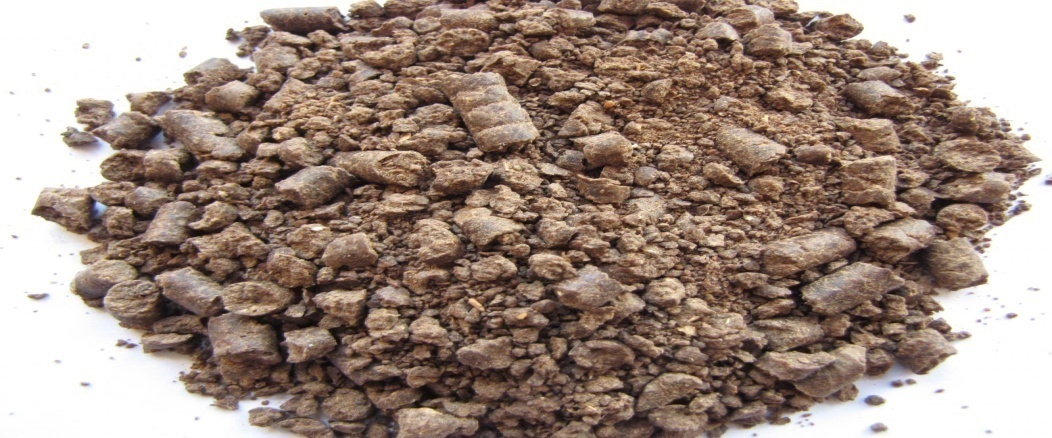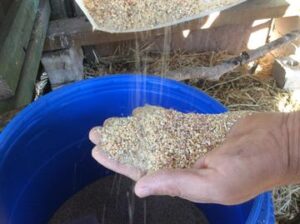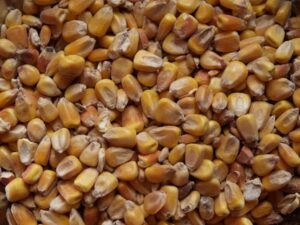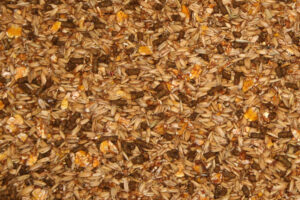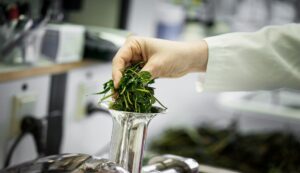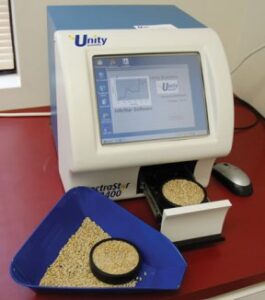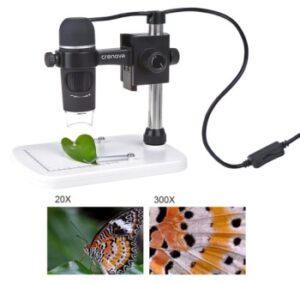QUALITY AND SAFETY OF ANIMAL FEEDS
Dr. Reenu Tanwar, Dr. Sheela Choudhary, Dr. Monika Karnani and Dr. Manju
Department of Animal Nutrition
Post Graduate Institute of Veterinary Education and Research (PGIVER), Jaipur
Introduction:-
Feed is considered as most expensive component of the total production cost in the animal industries. The nutrient content of feed stuffs is normally governed by genetics and environment. Feedstuffs are usually obtained from different geographical location and as a result their nutrient content can vary substantially. A quality feed would supply all nutrients in adequate quantity and high digestibility and ingestibility. For any type of evaluation appropriate sampling technique should be adopted for analysis of incoming ingredients and finished feeds.
Importance of feed quality evaluation
Feed evaluation is the testing of feed quality, providing information on the composition of feed or feed ingredients as well as their suitability for animal.One of the most important issues in the animal feed industry is production of safe and good quality feed, as it has a major impact on the product. The environment and human health are closely interrelated and animal product safety is an important requirement for well being of human society. Quality of animal feed affects the quality of animal product and ultimately human health. Feed ingredient quality is the foundation upon which an animal ration is built. Therefore, establishing an ingredient-quality evaluation program is an essential component of a successful feed processing operation. Specifications serve as the basis for purchase agreements, and for the formulation of rations.
In India there is wide variation in the processing techniques of raw materials ranging from very efficient to traditional methods, thus resulting in products of varied nutrient composition, color and texture.
The quality of ingredient should be evaluated by physical, chemical or biological methods.
Physical evaluation: – The physical evaluation of feed mostly provides preliminary information on the quality of the material. The physical evaluation includes examining the color, taste, smell, sound, and touch.
Color: – Any change in the color of the feed ingredients gives an indication of the maturity of the grain, storage conditions, presence of toxins, and contamination due to sand, possible use of insecticides/fungicides which gives dull and dusty appearance. Black color fish meal indicates the rancidity of fish oil. Dark brown color of the meat meal indicates over eating.
Size:
Size of the grains governs its energy value due to the proportional decrease/ increase in seed and its coat. Smaller the grain lower will be the nutrient content due to more proportion of seed coat. Higher weight indicates a higher ME value.
Homogeneity: – The presence of contaminants like other grains, husks broken grains, weeds seeds, and infested seeds is viewed.
In the oil seed cakes closer observation will reveal the presence of fibrous material like hulls in de-oiled ground nut cake, rice polish contaminated with husk. Presence of clumps in oil seeds meal the cake before packaging.
Clumps may contain fungal growth. Clumps in mineral ingredients are not suitable for premixing.
Smell: -Smell is the next best indicator. Standing near the stock immediately indicates any difference from normal smell. Musty odour indicates the beginning of the fungal contamination or boring insects. To detect rancidity of oil rich feed ingredients this is the best method. Odour of petroleum products is suggestive of excessive pesticide or fungicides. Leather smell of the meat meal indicates adulteration with leather meal.
Taste: – Each ingredient has a different taste, any change in the taste like bitterness in the grains, soya, sunflower oil meal and groundnut cake indicates the presence of mycotoxins. The level of salt can be detected by tasting.
Bitter taste of rice polish indicates the rancidity of fatty acids.
Touch: -Feeling the raw material will indicate the dryness and moisture content and clumpyness. Clumps can be found out by inserting the hand inside the bad. The clumps may be due to high moisture content, improper storage, packing of fresh warm solvent extracted meal that clumble on application of light pressure. Clumps formed due to excess moisture will be very hard.
Sound: – Dry grains on pouring down or biting will produce sound of spilling coins.
ADULTERANTS AND CONTAMINANTS IN FEED AND FODDER
Adulteration: –The intentional admixture of a pure substance with some cheaper and low quality substances to make money
Common Adulterants of Different Feed Ingredients-
| Feed ingredient | Adulterants |
| Groundnut cake | Groundnut husk, urea, non-edible oil cake |
| Mustard cake | Argimona maxicana seeds, fibrous feed ingredients, urea |
| Soybean meal | Urea, hulls, saw dust |
| Deoiled rice bran , wheat bran | Ground rice husk, saw dust |
| Fish meal | Common salt, urea, feather meal |
| Mineral mixture | Common salt, marble powder, sand, lime stone |
| Molasses | Water |
| Meat and bone meal | Sand, leather meal, blood meal, rock phosphate, |
| Shell grit | Sand, dust |
| Maize | Cobs, cob dust, sand |
| Rice broken | Marble, grit |
| Dicalcium phosphate | Calcite powder, rock phosphate |
Physical Methods to Detect Adulteration or Contamination:-
The Common contaminant or adulterant is husk or sand. Winnowing is the best method to detect husk in the feedstuff. Sieving can be done to differentiate contaminants based on particle size.
To detect for the presence of sand a weighed quantity of the grain is soaked in water then by sieving with hand the grains can be separated. The remaining water if decanted the settled sand can be weighed and the level of contamination can be assessed.
Chemical analysis: –
An analytical laboratory for the precise estimation of nutrient contents and contaminants is of utmost importance. Chemical analysis could be done for proximate constituents, fiber fractions, non starch polysaccharides, minerals, vitamins, and incriminating / toxic constituents etc.
Proximate analysis includes moisture, crude fat, crude fiber, crude protein, total ash and nitrogen free extract. This indicates possible constraints on usage due to the presence of excessive content of crude fiber, fat or total ash.
Additional tests should be carried out on materials with high ash content, to determined acid insoluble ash. The amount of acid insoluble ash is good guide to amount of sand or other dirt which may be present. It is also desirable to determine the free fatty acid content of oily material as this will affect the palatability due to rancidity.
Low Crude Protein and high Crude Fiber of oil seed meal is indicative of adulteration with fibrous material.
The high Crude Fiber alone is indicative of adulteration with urea and or some inferior quality oil seed meals like mahua, castor or karanja cake.
Presence of these oil cakes may be visualized by their abnoxious flavor or specific taste. These could be determined chemically.
| Presence of mahua cake in compound feed or in raw oil cake | Water extract of the test feeds + concentrate H2SO4 .violet or pink color indicates the presence of mahua cake . |
| Presence of Argimona seeds in mustard cake | Water extract of test feed + concentrate HNO3. brown – reddish color indicates the presence of Argimona seeds |
| Presence of urea | 1 part of test feed+ 3 parts of water and mix supernatant + few drops of DMAB reagent ( 2g dimethylamino benzaldehyde dissolved in 90ml methyl alcohol + 10 ml HCl) deepening of yellow color indicates the presence of urea . |
Reddy D.V. 2001
Spot tests:-
Identification of adulterants by use of certain reagents.
| Reagent | Reaction | Compound indicated |
| HCl 0.5 N | Effervescence | Carbonates / bicarbonates |
| Ammonium molybadate | No precipitate
|
Calcium carbonate or Absence of phosphorus |
| Ammonium molybadate | Yellow precipitate | Bone meal, dicalcium phosphate (presence of phosphorus ) |
| Silver nitrate 0.1 N | White precipitate | Salts |
| Distilled water | White solution | Milk products |
| Concentrate H2SO4 | Effervescence
Blue color Light red Red purple Orange brown |
Carbonates or NaCl
Chloretetracycline Oxytetracycline Tetracycline Riboflavin |
Near infrared reflectance spectroscopy technology (NIRS):-
Near Infrared Reflectance spectroscopy (NIR) is a sophisticated analytical technique for rapidly determining nutrient composition.
The near infrared reflectance spectroscopy has been used to determine the feed common ingredient, such as dry matter, crude protein, crude fiber, crude fat and so on, micro-components including amino acid, vitamin, and noxious components, and to determine the physical and chemical properties of animal products which including egg, mutton, beef and pork.
Microscopic analysis: –
Feed microscopy is commonly used for confirming the adulteration and identifying the adulterants. Feed ingredients, adulterants and contaminants must be studied under low and high magnification for distinguishing features whether coarsely or finely ground. At physical characteristics such as shape, color, and particle size, softness, hardness, and texture of the feeds are examined at low magnification of 8x to 50x. It is useful method to identify impurities/contaminants and evaluating the quality of feed ingredients. It also serves as a useful method for identifying missing ingredients in finished feed. The plant cells and structural features of the feeds are observed at high magnification of 100x to 500x since there characters are retained after grinding or even after powdering the feed ingredients.
Microscopic character of some feed ingredients:-
| Feed ingredients | Microscopic characters |
| Ground maize | Yellow, entire grain ground, maize bran and traces of maize cob |
| Groundnut cake | Light to dark tan, hulls, skins and characteristic odour |
| Sunflower Meal: | Striped or all black varieties for the hull, leathery hull with a paper-like lining. Twin hairs, united almost to their tips on the outer surface of the cypsela, unbroken pericarp fragment may appear as broken pieses in the medium, the outer epiderm of transversely elongated cells with zigzag walls. |
| Blood Meal: | Spherical particle, smooth surface with glass when rubbed, dark red to almost black in colour. |
| Cottonseed Meal: | Long, flat and twisted fibers adhering to the hulls, kernel fragments are yellow to brown containing many round, red, brown gossypol glands. The hull edge has a light brown layer with stairstep facets. The epidermal cells are heavy walled with dark pigmented interiors. Palisade cells can also be used for identification. |
| Meat Meal and Meat and Bone Meal: | Strong greasy odor, consist of hoof, horn, hair, fluff and vegetable fiber, cylindrical rods smooth muscle with alternative dark and light striated muscle. |
| Copra Meal: | Irregularly shaped flaky fragment with large, colorless, straight, thin walled cells of endosperm containing oil globules |
| Soybean Meal | Yellow to brown oval helium with a clear slit, pox-marked outer surface hull, hourglass and palisade cells from the hull are the major cellular keys for soybeans and also elongated cells below the peripheral cells of the cotyledon.
|
Biological evaluation:-
Biological evaluation of the feeds involve the use of animals, specializes persons to conduct the digestion and metabolism trials on the various species of livestock and poultry. These methods are time consuming.
Quality and Safety of Animal Feed in India
Quality and Safety of Animal Feed in India pdf
Reference :- Reddy D.V. 2001. Principles of Animal Nutrition and Feed Technology. Oxford & IBH Publication Co. PVT. LTD. New Delhi, India.



